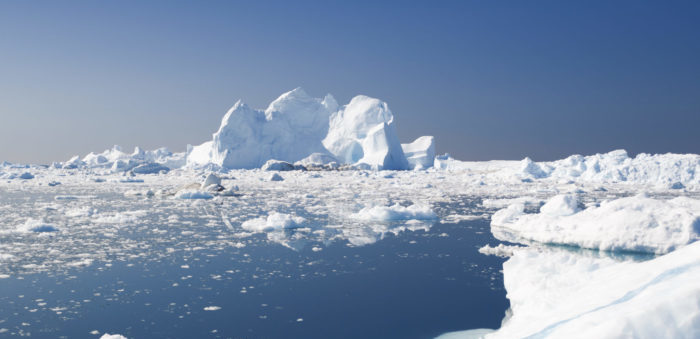Targeted engineering projects to hold off glacier melting could slow down ice-sheet collapse and limit sea-level rise, according to a new study issued in the European Geosciences Union journal The Cryosphere. However, the study highlights the importance of reducing emissions as a key to stopping climate change.
While an intervention similar in size to existing large civil engineering projects could only have a 30% chance of success, a larger project would have better odds of holding off ice-sheet collapse, note the study authors, Michael Wolovick and John Moore.
Namely, instead of trying to change the entire climate, the study suggests that we could apply a more targeted approach to limit one of the most drastic consequences of climate change: Sea-level rise.
This could be achieved with glacial geoengineering, which refers to making changes to the geometry of the seafloor near glaciers that flow into the ocean, forming an ice shelf, to prevent them from melting further, according to Science Daily.
Instead of limiting the effects of rising seas through traditional coastal protection, using glacier geoengineering to stop the flood at the source could be a viable option, as Wolovick and Moore showed.
The scientists looked into two glacial-geoengineering designs. One idea would be to build a wall underwater to block warm water reaching an ice shelf’s base, which is very sensitive to melting. A simpler design consists of constructing artificial mounds or columns on the seafloor: they wouldn’t block warm water but could support and hold back the glacier, helping it regrow. In either case, they were imagining very simple structures, simply piles of sand or gravel on the ocean floor.
The team ran computer models where they applied these designs to Thwaites Glacier in a warming world. Thwaites is projected to be the largest individual source of future sea-level rise and, at 80 to 100 km wide, it’s one of the widest glaciers in the world.
The research shows that even the simpler design could slow down the rate of sea-level rise, giving more time to coastal societies to adapt to rising waters. The smallest intervention has a 30% probability of preventing a runaway collapse of the West Antarctic Ice Sheet for the foreseeable future, according to the models. This intervention would consist of building isolated 300-metre-high mounds or columns on the seafloor using between 0.1 and 1.5 cubic kilometres of aggregate, depending on the strength of the material. This is similar to the amount of material that was excavated to build the Suez Canal in Egypt (1 cubic kilometre) or used in Dubai’s Palm Islands (0.3 cubic kilometres).
A more sophisticated project, going beyond the scale humanity has attempted so far, would have higher chances of success in avoiding a runaway ice-sheet collapse within the next 1000 years (the time the simulations run for), as well as better odds of causing the ice sheet to regain mass.
A small underwater wall blocking about 50% of warm water from reaching the ice shelf base could have 70% chance of succeeding, while larger walls would be even more likely to delay or even stop ice-sheet collapse.
Despite the encouraging results, the scientists stress they do not advocate starting these ambitious projects any time soon. While the simplest design would be similar in scale to existing engineering projects, it would be built in one of Earth’s harshest environments and the engineering details still need to be worked out.
Ice physics shows glacial geoengineering could work to hold off ice-sheet collapse, but both Wolovick and Moore stressed that reducing greenhouse-gas emissions remains a priority to tackle climate change.
Although glacial geoengineering could work to hold off ice-sheet collapse and limit sea-level rise, the scientists noted that reducing emissions could be the way to limit other harmful consequences of climate change, such as ocean acidification, floods, droughts and heat waves.
The more carbon we emit, the less likely it becomes that the ice sheets will survive in the long term at anything close to their present volume,
…Wolovick concludes.






























































